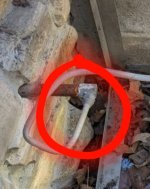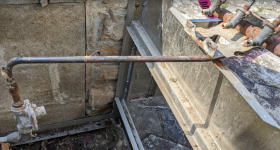Steve-G
TVWBB Super Fan
I just wanted to bounce this off of this knowledgeable group. I'm working on swapping out grills in a stone enclosure, and I took a closer look at the natural gas pipes leading to the grill manifold. At first it didn't look right because the pipes went from 1/2" to 1/4" to a 3/8" regulator to 1/4" to the manifold. In my mind, it didn't make sense that they would have downsized the pipe to 1/4" before upsizing to a 3/8" regulator. But after doing some reading, it seems like it should be fine. I think I have a water pipe mentality where downsizing will increase pressure and reduce flow, and vice versa for upsizing. But gas is a different animal.
It was probably installed by a professional plumber because of all of the work done on the enclosure and they had to run another NG line outside, so I'm assuming it is okay. What do you think?
1/2" pipe leading into the enclosure:
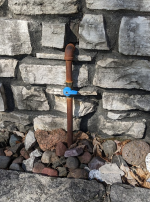
1/2" pipe on left coming into the enclosure. Then 1/4" bendable pipe in question to 3/8" inlet/outlet regulator to 1/4" pipe to grill manifold on the right.
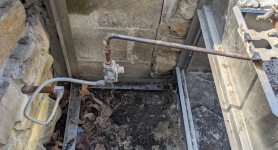
I need to replace the bendable pipe before the regulator for this project anyway, and I'm planning to just replace it with a 1/4" pipe like it is right now. I was originally thinking of using a 3/8" corrugated gas connection line like this, but now I'm not sure (ignore the fittings - I was just using this as an example):
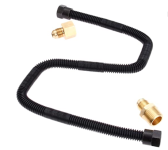
It was probably installed by a professional plumber because of all of the work done on the enclosure and they had to run another NG line outside, so I'm assuming it is okay. What do you think?
1/2" pipe leading into the enclosure:

1/2" pipe on left coming into the enclosure. Then 1/4" bendable pipe in question to 3/8" inlet/outlet regulator to 1/4" pipe to grill manifold on the right.

I need to replace the bendable pipe before the regulator for this project anyway, and I'm planning to just replace it with a 1/4" pipe like it is right now. I was originally thinking of using a 3/8" corrugated gas connection line like this, but now I'm not sure (ignore the fittings - I was just using this as an example):


